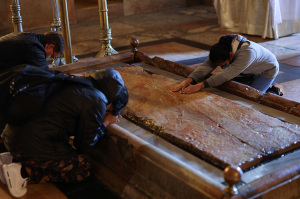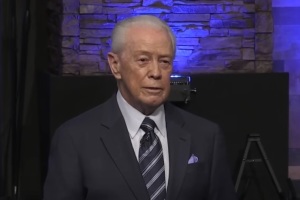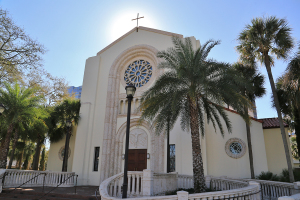Inside Church Planting: Outreach in an Unfamiliar Territory (Part 4)
When most people hear the word "missionary" they probably imagine a Christian worker in a faraway land who is trying to adapt to a new culture while also trying to share the Gospel with the indigenous people. Church planters, in many ways, view themselves as missionaries because they have to know the people and the culture they are trying to reach in order to effectively share the message of Jesus Christ.
Five years ago, Jack Thomas and his wife began to feel called away from their home in Washington, D.C., to start a new church plant in Pittsburgh, Pa. After serving as staff members at Allison Park Church near Pittsburgh for several months, they moved to the city's Southside community and started LifeStone Church.
Before officially launching the church, however, Thomas wanted to make it clear to the local residents that he wasn't just trying to build a church, but that he was genuinely there to help people.
"That first year it was just all serving...and it really set a great tone and foundation for the church we were about to launch," he told CP.
The church began as a small community group, which made its goal to find out what needs in the community were not being addressed. After going door to door and asking residents what they felt was missing, it was discovered that the community had little to offer young families in the area.
"We came up with some really good events that we felt were going to be able to meet some practical needs, add some value to their lives, where they wouldn't feel that we were just trying to cram Jesus down their throats," said Thomas.
Following their research, Thomas and his small group organized a number of activities for families with young children. One such event was a Fall Festival on Halloween night in which they offered family pictures with a scarecrow, face-painting, free candy and more; over 600 people attended the event.
Thomas says he isn't against street preaching, but he feels the most effective means of seeing people come to believe in Jesus Christ is through building relationships. "There's nothing that gives us more credibility with the lost than relationship," he said.
The key to outreach for new church plants, which usually lack in both financial resources and in the number of volunteers, he said, is to get creative and to rely on the power of the Holy Spirit. "What we've learned is we have to get really creative with the little we have. And we also have to remember that with that little, God can accomplish big," he said.
Exponential is an organization that provides church planting resources and seeks to accelerate the multiplication of healthy churches around the world. Geoff Surratt, director of Exponential, explained how established churches and church plants often differ in their approach to outreach and evangelism.
"For an established church, evangelism often is a program or is a part of what they do...that's not an option for a church plant," said Surratt. "Evangelism, for most church plants, is what they do. It isn't a season, it isn't a program, it's not really even their weekend services. It is the substance of what they're doing, why they're there, their survival."
But as church plants grow in size, he said, they will have to develop ways to disciple new Christians into becoming mature believers. He recently spoke to a Colorado church planter who is overwhelmed because his 250-person congregation, which consists of a high percentage of new Christians, lacks leaders who can disciple and help lead all of them into maturity.
Another important aspect of church planting is church marketing. Kevin Hendricks, editorial director for ChurchMarketingSucks.com, explained why a church's marketing efforts can play such a key role in reaching out to a community.
"How a church communicates and presents itself to the community is kind of the first step in evangelism," he said. "You can't really tell your community about Jesus until you start talking and connecting with them."
Marketing is especially important for church plants, said Hendricks, because oftentimes they are a brand new presence in towns where other churches have been established for 100 years or more.
There are a number of different ways a church can market itself to a community – billboards, radio advertisements, direct mail and more – but which way is most effective? Hendricks, again, pointed to relationships.
"That's kind of the biggest reason people come to church is because somebody invites them or somebody tells them. There's some relationship that draws them," he said.
For church plants who are working with a small budget, he also suggests taking advantage of social media sites like Twitter and Facebook, which are free to use, as a way of getting their message into the community.
Coming up with a good church name and logo, and developing an informative and attractive website are also key marketing strategies in a technological age, but Surratt said church planters should be careful to not get ahead of themselves when they're starting out.
"I think honestly, what I am seeing is often church planters get it backwards," said Surratt. "Church planters show up with their logo and their website and their first marketing campaign...but they don't know anything about the community they're going into."
He knows of one church planter who decided to plant a church in the community he grew up in, but still spent six months studying the community before starting the church. He thinks more and more church planters will take this approach in years to come.
The Exponential Conference – the largest church planting conference in North America with over 5,000 leaders representing about 18 countries and nearly every major denomination – was held in Orlando, Fla., last week. During the event, many church planters told Surratt how they approached starting their own churches.
"The most effective thing they did," he said, "is they spent at least six months to a year and did nothing but ask questions...forming relationships and learning about their community."
For the fifth and final part of the Inside Church Planting series, I'll examine how a church plant grows into a megachurch and how these massive congregations are viewed by their pastors now that they are well-established.




























